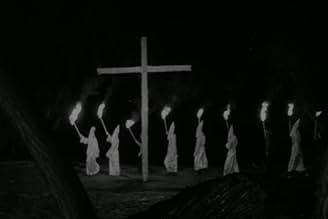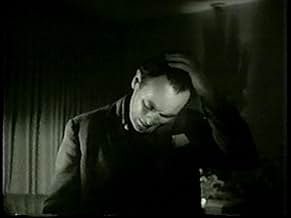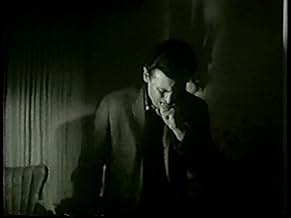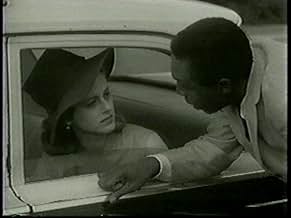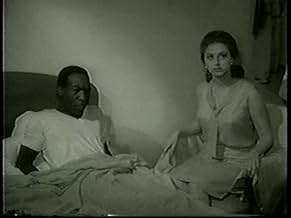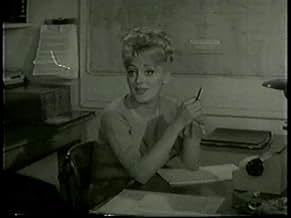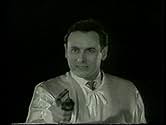Füge eine Handlung in deiner Sprache hinzuAfter a black man's daughter is killed by the KKK, he seeks revenge by becoming a Klansman.After a black man's daughter is killed by the KKK, he seeks revenge by becoming a Klansman.After a black man's daughter is killed by the KKK, he seeks revenge by becoming a Klansman.
James McEachin
- Lonnie
- (as Jimmy Mack)
W. McLennard
- Wallace
- (as William McLennard)
R.L. Armstrong
- Jenkins
- (as Tex Armstrong)
Handlung
WUSSTEST DU SCHON:
- WissenswertesMax Julien (Raymond) and Whitman Mayo (Alex) are both members of Kappa Alpha Psi Fraternity Inc.
- VerbindungenFeatured in The Wild World of Ted V. Mikels (2008)
- SoundtracksThe Black Klansman
By Tony Harris
Ausgewählte Rezension
It was a rare occasion in 1960's American cinema that the screen would reflect the social turbulence surrounding the civil rights movement, or the fundamentally tense race relations in particularly in the southern states. The white supremacist organisation, the Ku Klux Klan, was a dominant and violent presence which was largely controlled and operated by the local powers of small towns and cities. Whilst the subject was on the surface of the film adaptation of Harper Lee's Pulitzer prize winning novel, To Kill a Mocking Bird (1962), but the cinema mainstream was hardly representative of social conscience until Stanley Kramer's Guess Who's Coming to Dinner (1967). But a few low budget b-movies in the early '60's did attempt to tackle the subject. Roger Corman's under- seen William Shatner starer, The Intruder (1962), or Carl Lerner's Black Like Me (1964), whilst unsuccessful, at least attempted an intelligent, left-field approach. So it seems almost astounding with hindsight, that Ted V. Mikels, shlock director of later atrocities like The Astro- Zombies (1968) or The Doll Squad (1973), would produce a film that would formulate a film that is both sensitive and intelligent about the deep- seated racism within southern state America.
The film opens in the small town of Turnersville, a young, dumb kid walks into an all white diner, upsetting the patrons of the establishment by being the wrong colour. This small act leads to the local faction of the KKK to "retaliate" by shooting the boy then throwing Molotov cocktails at a congregation of a black church. This, along with the burning crucifix, was a reality in these small-minded towns. However, on throwing the fiery bottle at the doorway, the perpetrator witnesses a very young girl being hit directly with the weapon. The father of the girl, travelling musician Jerry Ellsworth (also notably of mixed race - but played by a white actor), heads to the town on hearing the news. Jerry takes himself to a hair salon and transfers himself into a white man (for all intents and purposes). He charms his way into the life of KKK head, and infiltrates the organisation, biding his time to reap revenge on the evil that killed his daughter.
It is of course a ludicrous concept, but the film offers quite emotional and sometimes dramatic scenes. Jerry is also accompanied by a white woman, Andrea (Rima Kutner), who is in love with him and wants a baby with him (something that an alternative title for the film overly focused on, I Crossed the Color Line). This alone would have been a controversial inclusion to the film, but it also balanced this with a more critical commentary on vigilante justice, and mob organisation (particularly on the black group formed in reaction to the attack). The opening scenes where the KKK shoot the young black boy are truly shocking for its time and budget, a scene that resembles the later opening scenes of Mississippi Burning (1989), which are shot quite similarly, staring starkly in the face of the victim. This is not to say that the film is wholly satisfactory, in true Mikels style the film is technically horrific; bad editing, uninspired camera work, the inevitable bad arrangement of scenes and characters. But, at its heart is something quite remarkable. Not revelatory, or even particularly exciting, but nonetheless, the central theme of social segregation is still relevant today (shockingly), and surprisingly some of the acting ain't too bad.
www.the-wrath-of-blog.blogspot.com
The film opens in the small town of Turnersville, a young, dumb kid walks into an all white diner, upsetting the patrons of the establishment by being the wrong colour. This small act leads to the local faction of the KKK to "retaliate" by shooting the boy then throwing Molotov cocktails at a congregation of a black church. This, along with the burning crucifix, was a reality in these small-minded towns. However, on throwing the fiery bottle at the doorway, the perpetrator witnesses a very young girl being hit directly with the weapon. The father of the girl, travelling musician Jerry Ellsworth (also notably of mixed race - but played by a white actor), heads to the town on hearing the news. Jerry takes himself to a hair salon and transfers himself into a white man (for all intents and purposes). He charms his way into the life of KKK head, and infiltrates the organisation, biding his time to reap revenge on the evil that killed his daughter.
It is of course a ludicrous concept, but the film offers quite emotional and sometimes dramatic scenes. Jerry is also accompanied by a white woman, Andrea (Rima Kutner), who is in love with him and wants a baby with him (something that an alternative title for the film overly focused on, I Crossed the Color Line). This alone would have been a controversial inclusion to the film, but it also balanced this with a more critical commentary on vigilante justice, and mob organisation (particularly on the black group formed in reaction to the attack). The opening scenes where the KKK shoot the young black boy are truly shocking for its time and budget, a scene that resembles the later opening scenes of Mississippi Burning (1989), which are shot quite similarly, staring starkly in the face of the victim. This is not to say that the film is wholly satisfactory, in true Mikels style the film is technically horrific; bad editing, uninspired camera work, the inevitable bad arrangement of scenes and characters. But, at its heart is something quite remarkable. Not revelatory, or even particularly exciting, but nonetheless, the central theme of social segregation is still relevant today (shockingly), and surprisingly some of the acting ain't too bad.
www.the-wrath-of-blog.blogspot.com
- tomgillespie2002
- 24. Feb. 2013
- Permalink
Top-Auswahl
Melde dich zum Bewerten an und greife auf die Watchlist für personalisierte Empfehlungen zu.
- How long is The Black Klansman?Powered by Alexa
Details
Box Office
- Budget
- 80.000 $ (geschätzt)
- Laufzeit1 Stunde 28 Minuten
- Farbe
- Sound-Mix
- Seitenverhältnis
- 1.85 : 1
Zu dieser Seite beitragen
Bearbeitung vorschlagen oder fehlenden Inhalt hinzufügen

Oberste Lücke
By what name was The Black Klansman (1966) officially released in India in English?
Antwort
